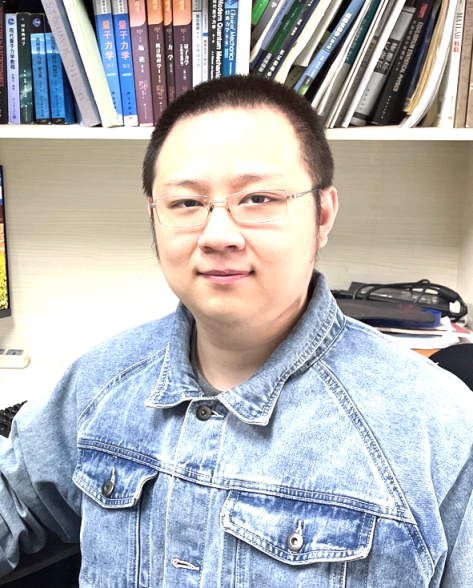
搜索网站、位置和人员

新闻与活动 活动信息
交叉科学中心系列讲座CIS Seminar Series | The energy cost for molecular synchronization: theoretical insights from cyanobacterial circadian clock
时间
2025年8月12日(周二)
下午16:20-17:00
地点
西湖大学云谷校区学术环E10-211
主持
西湖大学交叉科学中心讲席教授汤雷翰
受众
全体师生
分类
学术与研究
交叉科学中心系列讲座CIS Seminar Series | The energy cost for molecular synchronization: theoretical insights from cyanobacterial circadian clock
时间:2025年8月12日(周二)下午16:20-17:00
Time:16:20-17:00, Tuesday, August 12, 2025
主持人: 西湖大学交叉科学中心讲席教授汤雷翰
Host: Dr. Leihan Tang, Chair Professor, the Center for Interdisciplinary Studies
地点:西湖大学云谷校区学术环E10-211
Venue:E10-211, Yungu Campus
讲座语言:英文
Lecture Language: English

Max Planck Institute for the Physics of Complex Systems
主讲人/Speaker:
Dr. Dongliang Zhang is currently a postdoctoral associate at the Max Planck Institute for the Physics of Complex Systems (MPI-PKS) in Germany. He obtained his PhD from Peking University in 2020, under the supervision of Dr. Ouyang, Qi and Dr. Tu, Yuhai. He joined MPI-PKS in September 2024, before that he worked as a postdoctoral associate at Peking University and Tsinghua University. His research interests mainly focus on how non-equilibrium active processes affect biological functions at various scales, and what are the energy costs to carry out corresponding biological functions. His research tools primarily come from biophysical modeling as well as non-equilibrium thermodynamics.
讲座摘要/Abstract:
Synchronization of is a collective phenomenon critical for maintaining biological rhythms, and the general dynamics have been well studied by using theoretical models (such as Kuramoto model). However, relatively little is known about how realistic molecular oscillators in cells achieve synchronization, where the underlying mechanism is governed by biochemical reactions with a small number of molecules and large fluctuations. It's also not much clear how and how much the energy is cost to counter the effects of inevitable internal noise and sustain the collective order.
The post-transcriptional cyanobacterial circadian clock, namely Kai system, can oscillate in vitro with the presence of only three type of proteins and ATP. It provides a good example to study biomolecular oscillators from many aspects, including its synchronization behavior. In this talk, I will first briefly introduce the molecular mechanism for the oscillation in Kai system, including the two possible synchronization mechanisms. Then, I will introduce two of my theoretical work on the energy cost for molecular synchronization [1][2], inspired the either of the respective mechanism. The first work studied the directly pairwise interaction (PI) between molecular oscillators [1], and the second work is focused on a less-studied indirect global coupling by altruistic resource-sharing (ARS) mechanism [2]. Finally, I will compare the common points and the differences between the two mechanism, and the insights for biomolecular clock design principle.
[1]Zhang, D., Cao, Y., Ouyang, Q., & Tu, Y. (2020). The energy cost and optimal design for synchronization of coupled molecular oscillators. Nature physics, 16(1), 95-100.
[2]Zhang, D., Cao, Y., Ouyang, Q., & Tu, Y. (2025). Altruistic resource-sharing mechanism for synchronization: The energy-speed-accuracy tradeoff. Physical Review Letters, 135(3), 037401.
交叉科学中心,徐恺吟,邮箱:xukaiyin@westlake.edu.cn
Center for Interdisciplinary Studies, Kaiyin Xu, Email: xukaiyin@westlake.edu.cn

















